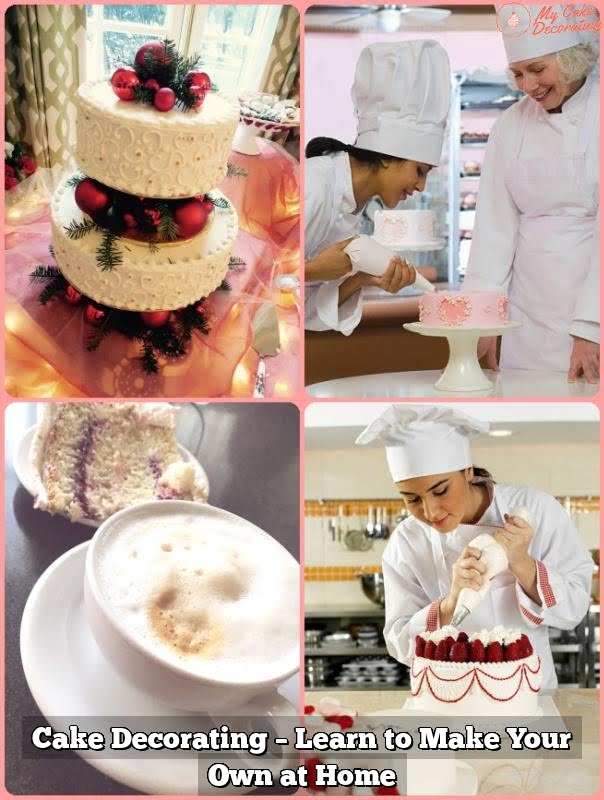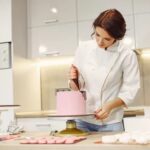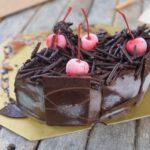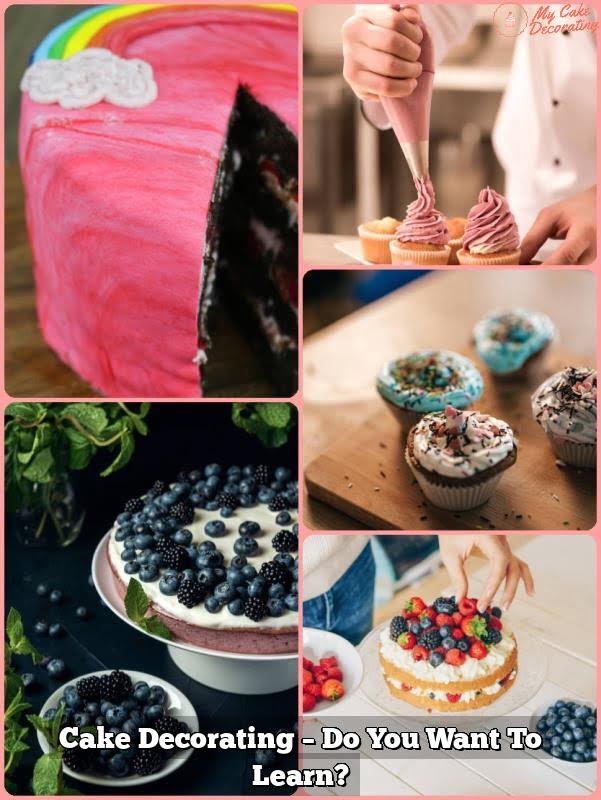Are you interested in learning how to decorate cakes from the comfort of your own home? In this article, we will explore the world of cake decorating and provide valuable resources for those looking to enhance their skills in this culinary art. From understanding the basics of cake decorating to discovering online courses and essential tools, we have everything you need to kickstart your journey into the delightful world of cake decoration.
Cake decorating is not just about making a cake visually appealing; it is also a form of creative expression that adds a personal touch to any baked creation. Whether you are a professional baker or simply enjoy baking as a hobby, mastering the art of cake decorating can elevate your skills and take your confectionery creations to new heights.
In this section, we will delve into the fundamentals of cake decorating and why it holds significant importance in the culinary world.
Learning cake decorating from home offers numerous benefits, including flexibility, convenience, and accessibility. With the rise of online learning platforms, aspiring decorators can now access a wide range of resources and courses from the comfort of their own kitchen. Throughout this article, we will highlight these advantages and provide guidance on how to make the most out of learning cake decorating from home.
Benefits of Learning Cake Decorating From Home
Learning cake decorating from home offers numerous benefits that make it an attractive option for individuals interested in honing their skills in this culinary art form. The flexibility and convenience of online learning options provide aspiring cake decorators with the opportunity to pursue their passion on their own terms. Here are some of the key advantages of learning cake decorating from home:
- Flexibility to learn at your own pace
- No need for commuting or travel expenses
- Ability to balance learning with other personal or professional commitments
- Access to a wide range of online resources and courses
- Opportunity to practice and experiment in the comfort of your own kitchen
Furthermore, learning cake decorating from home allows individuals to tailor their learning experience to suit their specific preferences and interests. Whether you prefer to focus on certain techniques, styles, or types of cakes, the flexibility of home-based learning enables you to customize your educational journey according to your unique goals.
Lastly, the cost-effectiveness of learning cake decorating from home cannot be overlooked. By avoiding traditional classroom settings and associated expenses, such as tuition fees and transportation costs, individuals can invest in high-quality tools and supplies for cake decorating, ultimately enhancing their learning experience even further.
Ultimately, learning cake decorating from home empowers individuals to embrace creativity, develop new skills, and embark on a rewarding culinary journey without limitations.
Essential Tools and Supplies for Cake Decorating
When it comes to cake decorating, having the right tools and supplies is essential for creating beautiful and professional-looking cakes. Whether you’re a beginner or an experienced baker, having a well-stocked collection of cake decorating tools can make all the difference in the final outcome of your creations.
Basic Tools
Some of the basic tools needed for cake decorating include an offset spatula for spreading frosting, a cake turntable for easy and smooth icing application, and a bench scraper for achieving clean and even surfaces on your cakes. Additionally, piping bags and tips are crucial for creating intricate designs and adding details to your cakes.
Specialty Supplies
Specialty supplies such as fondant smoothers, gum paste tools, and flower cutters are essential for more advanced cake decorating techniques. These items allow you to create 3D elements, intricate patterns, and lifelike decorations that take your cakes to the next level.
Food Coloring and Edible Decorations
Food coloring gels or liquid food colors are necessary for tinting frosting and fondant to achieve specific colors. Edible decorations such as sprinkles, edible glitter, and sugar flowers can add the perfect finishing touches to your decorated cakes.
Having a comprehensive understanding of each tool’s purpose and functionality will not only improve your skills but also allow you to experiment with different techniques and designs. Building a collection of quality tools and supplies is an investment that will elevate your cake decorating abilities at home.
Online Courses and Resources for Cake Decorating
When it comes to learning cake decorating from home, there are numerous online courses and resources available to help individuals develop their skills and creativity. These platforms offer a convenient and flexible way to learn the art of cake decorating without the need to attend in-person classes. Many of these online options provide access to expert instructors, comprehensive tutorials, and a supportive community of fellow learners.
One popular online platform for cake decorating courses is “Craftsy,” which offers a wide range of classes taught by professional cake decorators. These courses cover various topics such as buttercream techniques, piping skills, fondant decorations, and more. Additionally, Craftsy allows students to interact with instructors and fellow classmates through online discussions and Q&A sessions.
Another valuable resource for learning cake decorating from home is YouTube. Many experienced cake decorators share their knowledge through tutorial videos on this platform. Viewers can learn different techniques at their own pace and experiment with new ideas in their own kitchens. Additionally, there are specific channels dedicated solely to cake decorating, providing a wealth of tips and inspiration for beginners.
Furthermore, websites such as “Wilton” offer a plethora of resources including articles, recipes, tutorials, and instructional videos for aspiring cake decorators. Wilton also provides access to a wide range of tools and supplies needed for cake decorating, making it a one-stop shop for enthusiasts looking to enhance their skills. With these online courses and resources readily available, aspiring cake decorators have the opportunity to develop their craft from the comfort of their homes at their own convenience.
| Platform | Features |
|---|---|
| Craftsy | Professional classes taught by expert instructors |
| YouTube | Tutorial videos on various techniques; channels dedicated to cake decorating |
| Wilton | Articles, recipes, tutorials; access to tools & supplies for cake decorating |
Step-by-Step Guide to Cake Decorating Techniques
Learning cake decorating from home offers the opportunity to explore a variety of techniques that can elevate your baking skills to new heights. Whether you’re a beginner looking to master the basics or an experienced baker aiming to refine your craft, there are numerous step-by-step cake decorating techniques that you can learn and practice in the comfort of your own kitchen.
Piping
One of the fundamental skills in cake decorating is piping, which involves using a pastry bag and different tips to create intricate designs with frosting. From simple borders and rosettes to more complex floral patterns and lettering, mastering the art of piping opens up endless creative possibilities for embellishing cakes and other desserts.
Frosting
Another essential technique in cake decorating is frosting application. Learning how to smoothly cover a cake with buttercream or fondant, as well as creating textured finishes such as ruffles or ombre effects, can transform a plain dessert into a work of art. Understanding different frosting consistencies and proper application methods is key to achieving professional-looking results.
Fondant Work
Working with fondant allows for sculpting and shaping intricate designs for cakes and cupcakes. Whether it’s creating 3D figurines, decorative cutouts, or smooth fondant coverings, mastering the art of fondant work requires patience and precision. Learning techniques such as molding, embossing, and painting on fondant can take your cake decorating skills to the next level.
By following step-by-step tutorials, practicing consistently, and experimenting with different techniques, you can develop proficiency in various cake decorating methods. With dedication and creativity, honing these skills from home can lead to stunning edible creations that reflect your personal style and artistic flair.
Troubleshooting Common Cake Decorating Challenges
When it comes to cake decorating, there are a few common challenges that may arise during the process. One of the most frequent issues is frosting that is too runny or too stiff. To troubleshoot this problem, adjusting the consistency by adding more powdered sugar to thicken it or a small amount of liquid to thin it out can help achieve the perfect texture for frosting.
Another challenge that decorators often face is air bubbles in their icing. This can result in an uneven and bumpy finish on the cake. To resolve this issue, using a toothpick or small needle to gently pop any air bubbles that appear on the surface of the icing can help create a smoother and more professional look.
Additionally, achieving vibrant and bold colors when tinting frosting can be difficult. If your colored frosting appears dull or pastel instead of the vibrant shade you intended, try using gel-based food coloring rather than liquid food coloring for more intense and concentrated hues.
| Cake Decorating Challenge | Troubleshooting Solution |
|---|---|
| Runny or stiff frosting | Adjust consistency by adding powdered sugar or liquid |
| Air bubbles in icing | Pop air bubbles with toothpick or needle |
| Dull colored frosting | Use gel-based food coloring for more intense hues |
Practice and Portfolio Building
Once you have equipped yourself with the necessary tools, learned the techniques, and troubleshooted common challenges in cake decorating, it is essential to dedicate time for practice. Like any skill, mastering cake decorating requires consistent practice and patience. Set aside specific time slots each week to work on perfecting your techniques, experimenting with new designs, and honing your skills. Additionally, documenting your progress through photographs or videos can serve as a visual portfolio of your work.
Building a portfolio of decorated cakes not only showcases your creativity and technical abilities but also serves as a valuable tool for personal and professional use. Whether you aspire to become a professional cake decorator or simply want to share your creations with friends and family, having a collection of well-documented cakes can open doors for future opportunities.
Consider creating an online portfolio through social media platforms or personal websites to display your work and attract potential clients or collaborators.
Remember that every cake you decorate is an opportunity to learn and grow. Don’t be discouraged by any imperfections or mistakes along the way – they are all part of the learning process. With dedication and perseverance, you will see improvement over time, leading to more polished and impressive creations. Practice not only helps in perfecting techniques but also allows for creative exploration and innovation in cake decorating.
Final Thoughts and Encouragement
In conclusion, learning cake decorating from home can be a rewarding and fulfilling experience. The flexibility and convenience of online learning options allow individuals to explore their creative potential in the comfort of their own kitchen. By taking advantage of the essential tools and supplies for cake decorating, as well as engaging in online courses and resources, aspiring cake decorators can develop their skills at their own pace.
It is important to remember that mastering cake decorating techniques takes time and practice. Building a portfolio of decorated cakes not only showcases one’s progress but also serves as a source of pride and accomplishment. As with any artistic endeavor, patience and perseverance are key in honing one’s craft.
Ultimately, delving into the world of cake decorating offers endless creative possibilities and opportunities for personal or professional growth. Whether it’s creating stunning designs for special occasions or pursuing a career in the culinary industry, learning cake decorating from home opens doors to a vibrant and imaginative field. With dedication and enthusiasm, anyone can become proficient in this art form and take pride in their beautifully decorated creations.
Frequently Asked Questions
How Can I Practice Cake Decorating at Home?
You can practice cake decorating at home by starting with basic techniques and gradually building your skills. Begin by experimenting with simple buttercream frosting and practicing piping techniques on parchment paper or a smooth surface.
As you become more comfortable, you can start working with fondant, gum paste, and different decorating tools. There are plenty of online tutorials and classes available to help you learn and improve your cake decorating abilities at home.
Is Cake Decorating Hard to Learn?
Cake decorating can be challenging to learn, especially when it comes to mastering more advanced techniques such as intricate piping or creating complex fondant designs. However, with patience, practice, and a willingness to learn from mistakes, it is definitely possible for anyone to become skilled at cake decoration.
Starting with the basics and gradually progressing to more difficult designs can make the learning process easier and less overwhelming.
How to Decorate a Cake for Beginners?
If you’re a beginner looking to decorate a cake, start by choosing a simple design that matches your skill level. Begin by preparing a smooth layer of frosting on the cake surface before experimenting with basic piping techniques using different tips. You can also use stencils or cut-outs to create simple designs out of fondant or gum paste.
As you gain confidence and experience, you can gradually move on to trying more complex decorations such as 3D figures or tiered cake designs. Don’t be afraid to make mistakes – they are all part of the learning process!

Welcome to my blog about home and family. This blog is a place where I will share my thoughts, ideas, and experiences related to these important topics. I am a stay-at-home mom with two young children. I hope you enjoy reading it! and may find some helpful tips and ideas that will make your home and family life even better!





